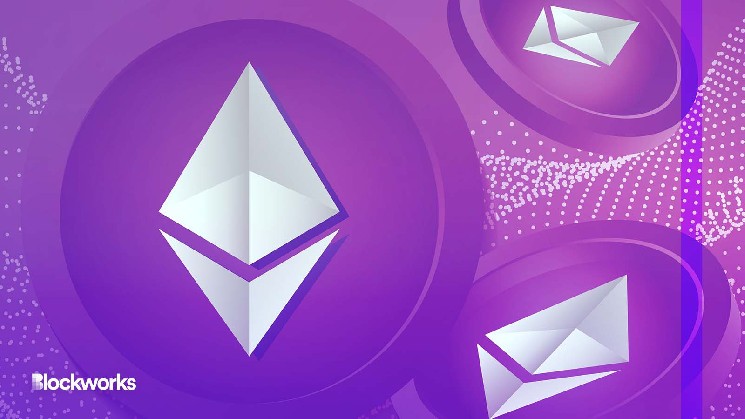Which ETH Staking Providers Will Be Ready for Withdrawals on Day 1?

The long-awaited Ethereum Shanghai-Capella upgrade is right around the corner, and it will enable validators to withdraw their staked ether from the network.
To participate in staking and earn rewards on Ethereum, individual validators must lock in 32 ETH (about $52,500) into the staking contract.
Activating withdrawals will enable these Ethereum stakers to claim rewards for participating in securing the network, and eventually to completely reclaim their locked-up ether, if they so choose.
But what about those who don’t run their own validator nodes and instead rely on one of a plethora of staking services or liquid staking tokens?
As April 12 draws near, these staking service providers must plan how to enable withdrawals as well.
“If you are part of a staking pool or hold liquid staking derivatives, you should check with your provider for more details about how staking withdrawals will affect your arrangement, as each service operates differently,” the Ethereum Foundation said in a blog post.
Following the upgrade, users will have the option to redeem their underlying staked ether or switch staking providers.
“If a particular pool is getting too large, funds can be exited and redeemed, and re-staked with a smaller provider. Or, if you’ve accumulated enough ETH you could stake from home,” the blog post said.
Lido — one of the largest liquid staking service providers, with a market capitalization of a little over $10 billion — won’t allow its users who hold stETH to redeem ETH initially. The Lido DAO noted on Twitter that a needed upgrade is expected by mid-May, citing security checks.
Calling the delay “a safety margin,” the group tweeted that “stETH withdrawals won’t launch on mainnet until all audits concerning on-chain code are completed.”
An update on Lido Ethereum withdrawals:
TL;DR:
– Lido DAO is currently undertaking 7 V2 audits.
– Codebase is very close to being finalized. All major fixes have been merged.
– 4 week Goerli testnet will commence next week (c. March 20th).
– Mainnet upgrade expected mid May.— Lido (@LidoFinance) March 14, 2023
In the case of Coinbase, a centralized exchange that also provides staking services, withdrawal requests will be available 24 hours following the upgrade, the company said in a tweet.
“All unstaking requests are processed on-chain, and we’ll pass the unstaked funds and staking rewards to you once released by the Ethereum protocol,” Coinbase tweeted.
The exchange is currently under scrutiny from the SEC after receiving a Wells notice over alleged security concerns.
Rocketpool, another decentralized Ethereum staking protocol, noted in a blog post earlier this month that staking withdrawals will likely be possible in time for Shanghai-Capella, following an upgrade dubbed Atlas, though specific dates have not yet been confirmed.
“We are targeting a mainnet Atlas release for end of March / early April,” RocketPool founder David Rugendyke said.
Stakewise has not provided clear documentation outlining dates of withdrawals but is estimated to be available following its “Phase 2” plans.
“Upon arrival of Phase 2, StakeWise users will be able to burn sETH2 and rETH2 within the app and receive ETH in return at a 1:1 ratio,” the company said in a blog post.
Similar to Stakewise, Frax has not detailed specific withdrawal dates. A representative for Frax was not immediately available for comment.






 Bitcoin
Bitcoin  Ethereum
Ethereum  Tether
Tether  USDC
USDC  TRON
TRON  Dogecoin
Dogecoin  Cardano
Cardano  Bitcoin Cash
Bitcoin Cash  Chainlink
Chainlink  LEO Token
LEO Token  Stellar
Stellar  Zcash
Zcash  Monero
Monero  Litecoin
Litecoin  Hedera
Hedera  Dai
Dai  Cronos
Cronos  OKB
OKB  Tether Gold
Tether Gold  Ethereum Classic
Ethereum Classic  KuCoin
KuCoin  Gate
Gate  Algorand
Algorand  Cosmos Hub
Cosmos Hub  VeChain
VeChain  Dash
Dash  Tezos
Tezos  Stacks
Stacks  TrueUSD
TrueUSD  IOTA
IOTA  Basic Attention
Basic Attention  Decred
Decred  Theta Network
Theta Network  NEO
NEO  Synthetix
Synthetix  Qtum
Qtum  Ravencoin
Ravencoin  0x Protocol
0x Protocol  DigiByte
DigiByte  Zilliqa
Zilliqa  Nano
Nano  Numeraire
Numeraire  Siacoin
Siacoin  Waves
Waves  Ontology
Ontology  Enjin Coin
Enjin Coin  Status
Status  BUSD
BUSD  Pax Dollar
Pax Dollar  Hive
Hive  Lisk
Lisk  Steem
Steem  Huobi
Huobi  OMG Network
OMG Network  NEM
NEM  Augur
Augur  Bitcoin Gold
Bitcoin Gold  Ren
Ren  Bitcoin Diamond
Bitcoin Diamond